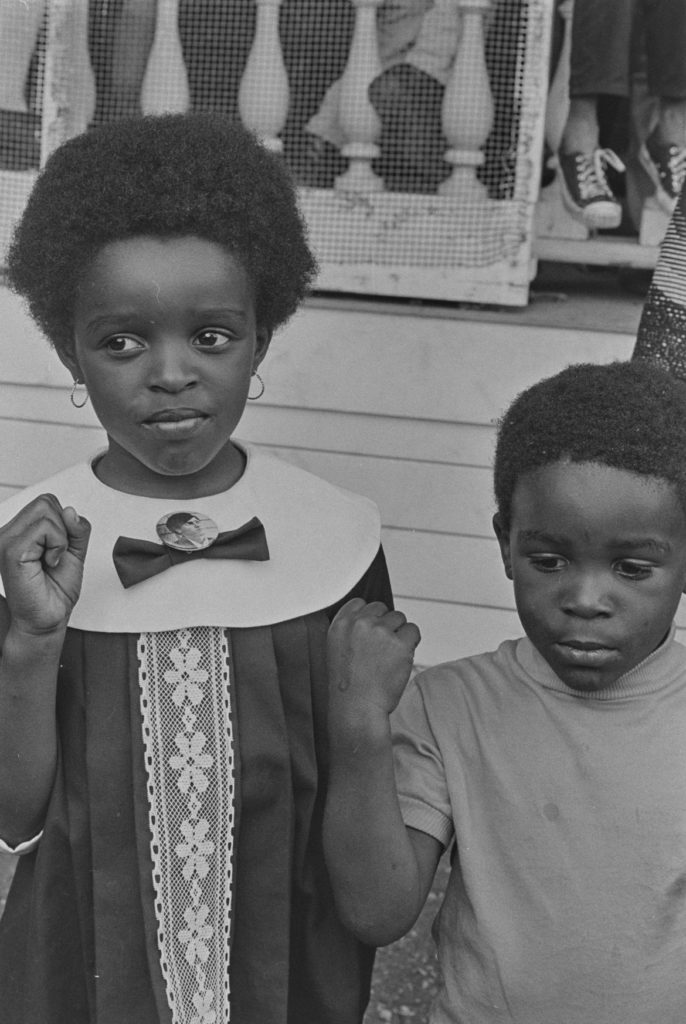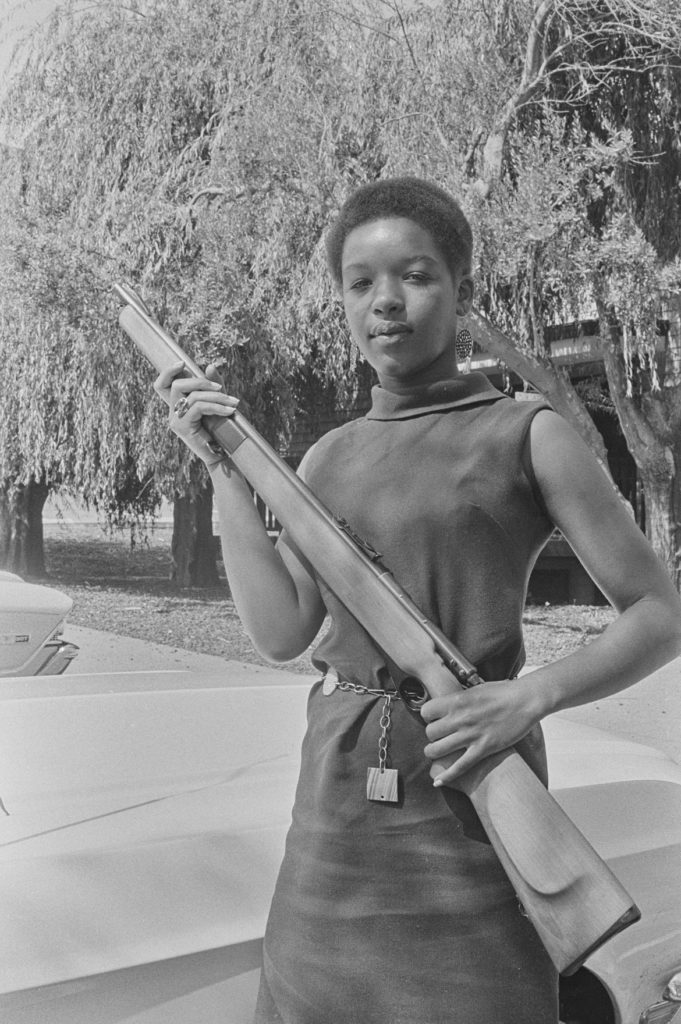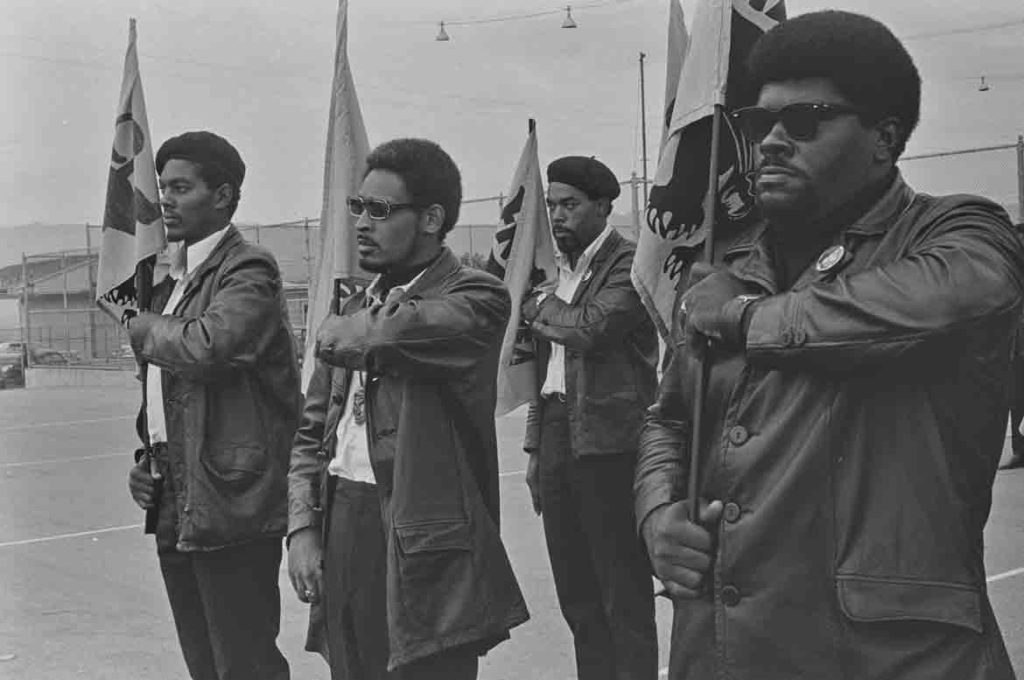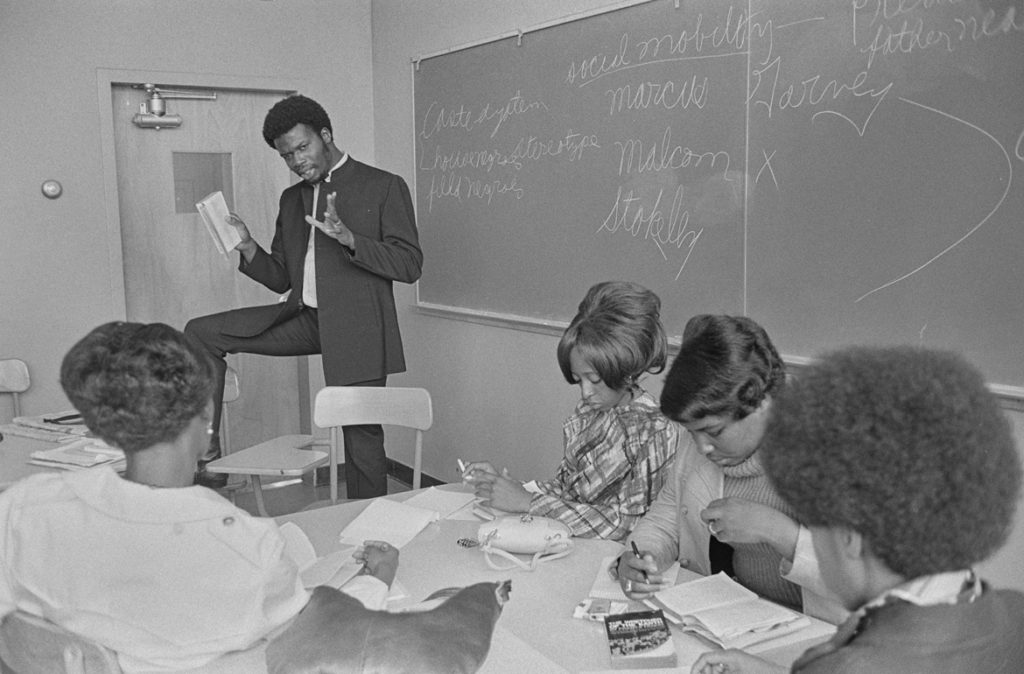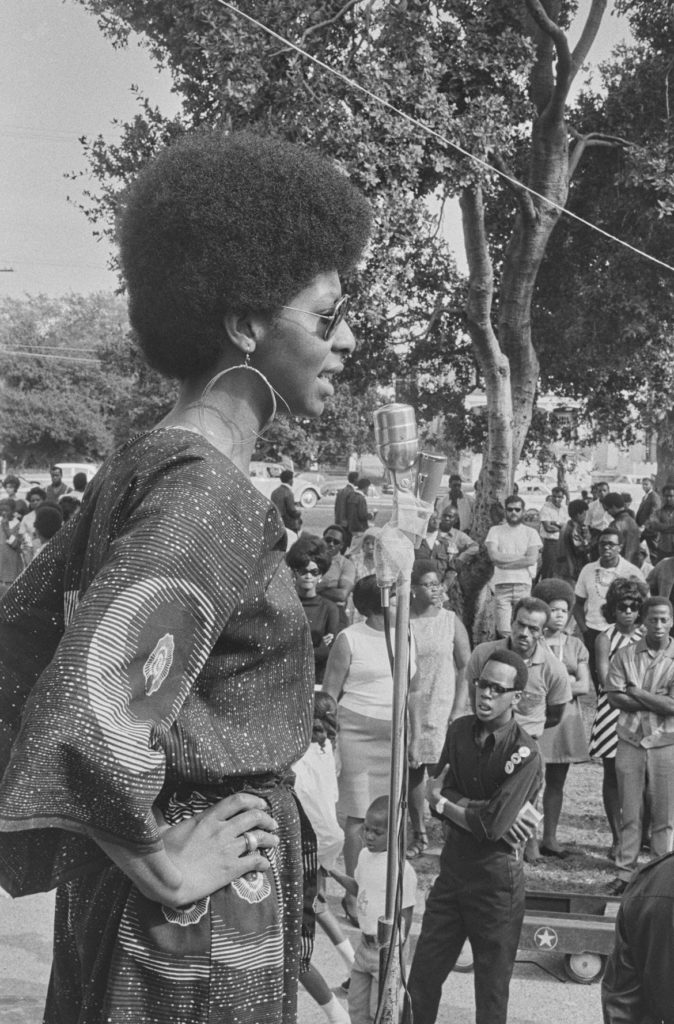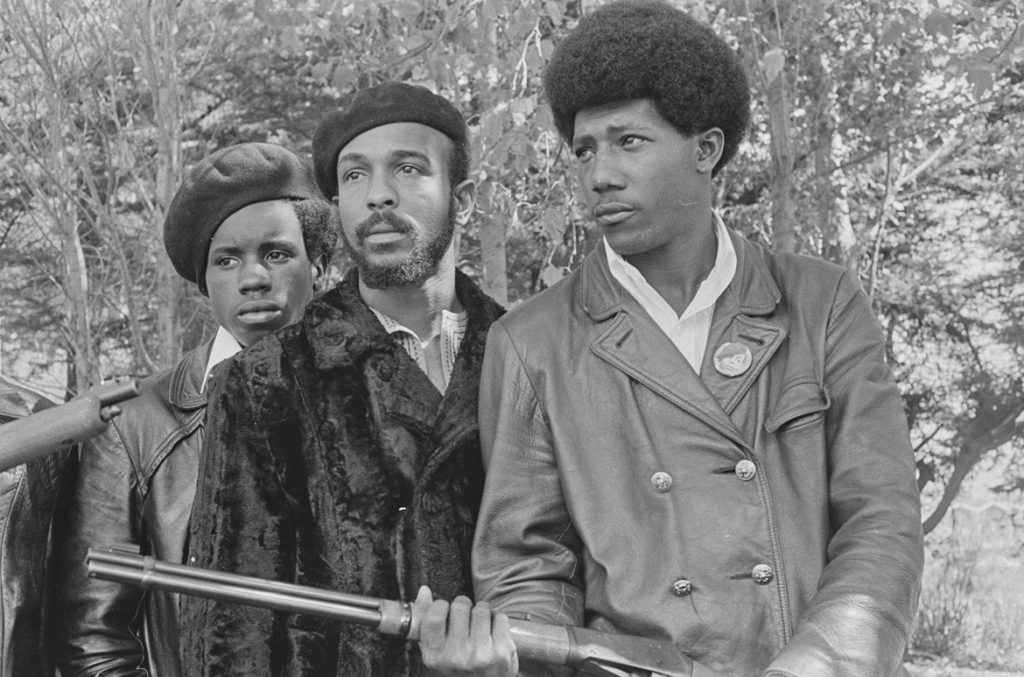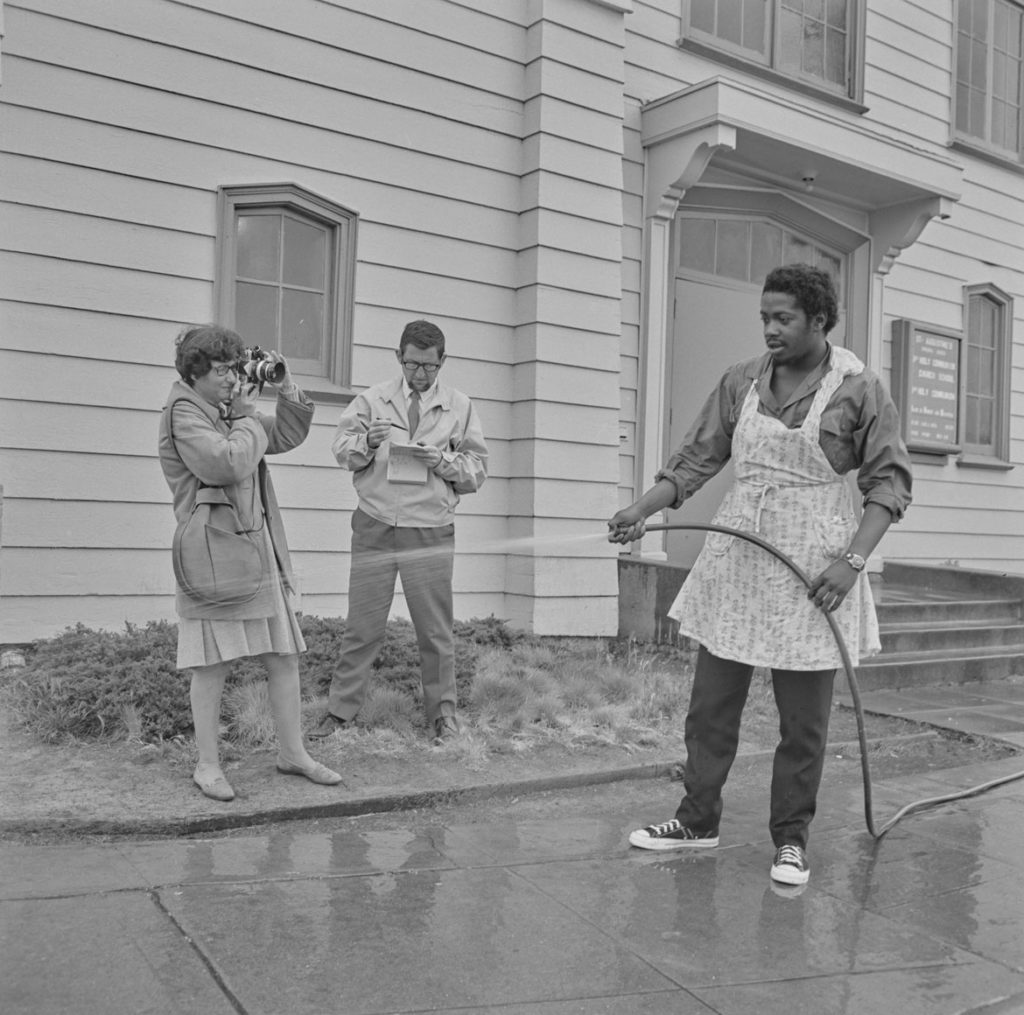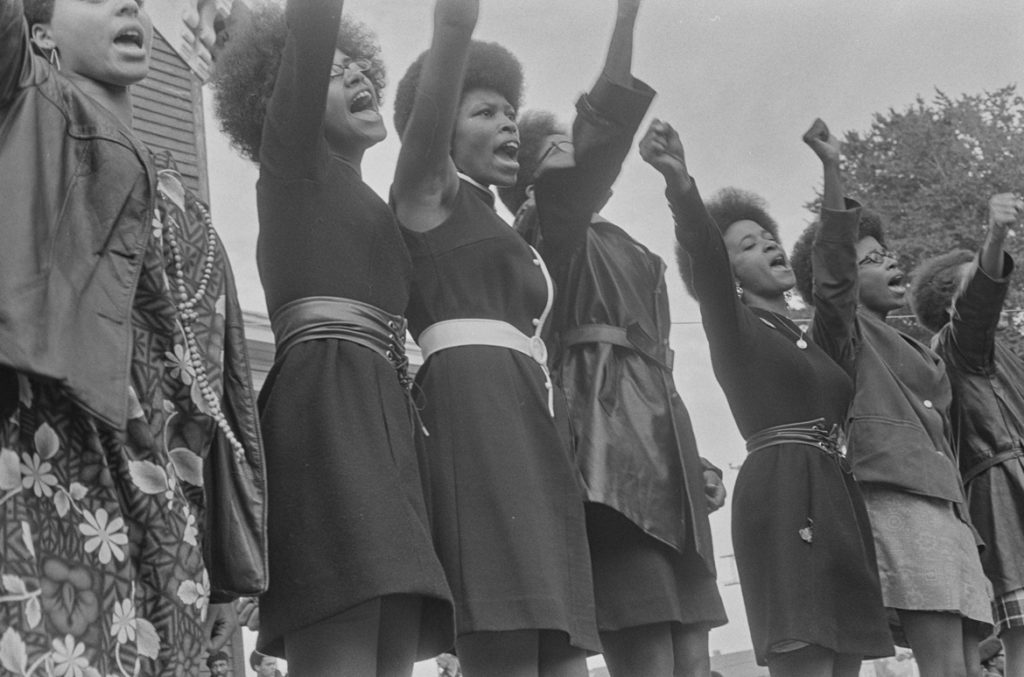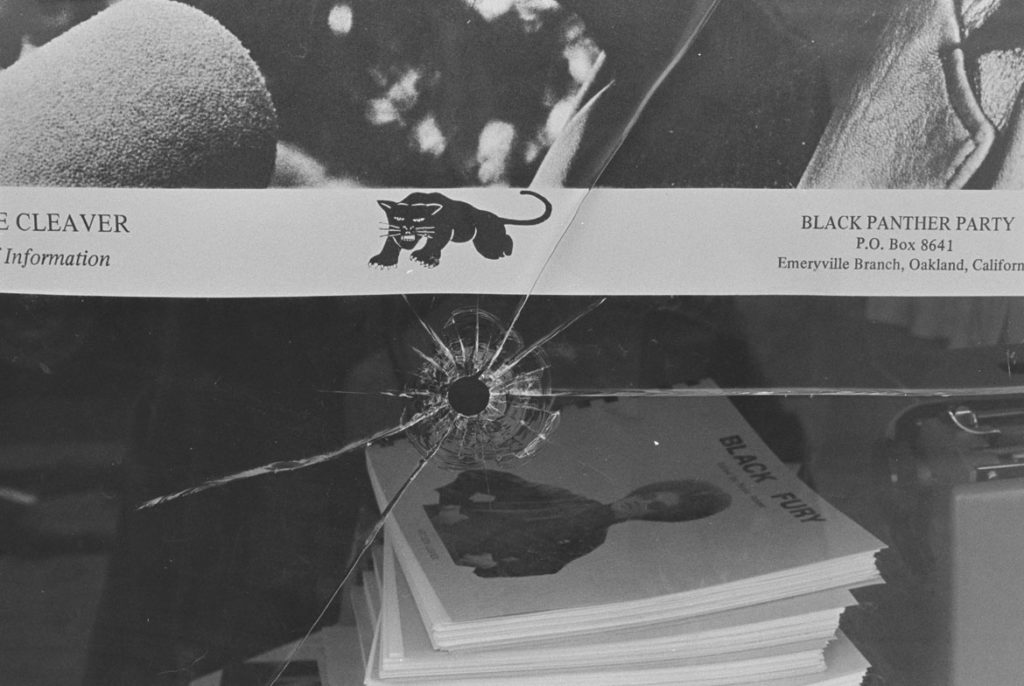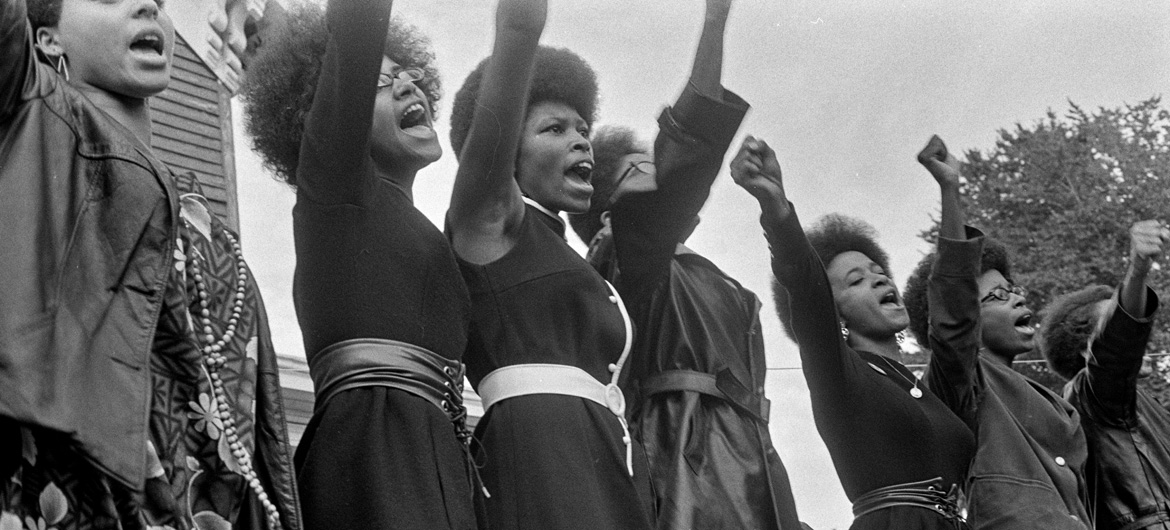“A lot of people tried to talk us out of it,” Pirkle Jones told The New York Times in December 1968 when an exhibition of photos of the Black Panther Party in Oakland by him and his wife Ruth-Marion Baruch debuted at San Francisco’s de Young Museum. “They said that it would be dangerous being around those people.”
The Panthers’ proud Black Power stance, socialist message and knack for attracting publicity upset the FBI and police. FBI Director J. Edgar Hoover alleged that they were “the greatest threat to the internal security of the United States.”
But that’s not what the White couple based in suburban Mill Valley experienced. Rather, Baruch wrote in their 1970 book “The Vanguard” collecting the photos, “Slowly, we began to comprehend how severely maligned they were by all the communications media. The urge to correct this injustice grew rapidly within me.”
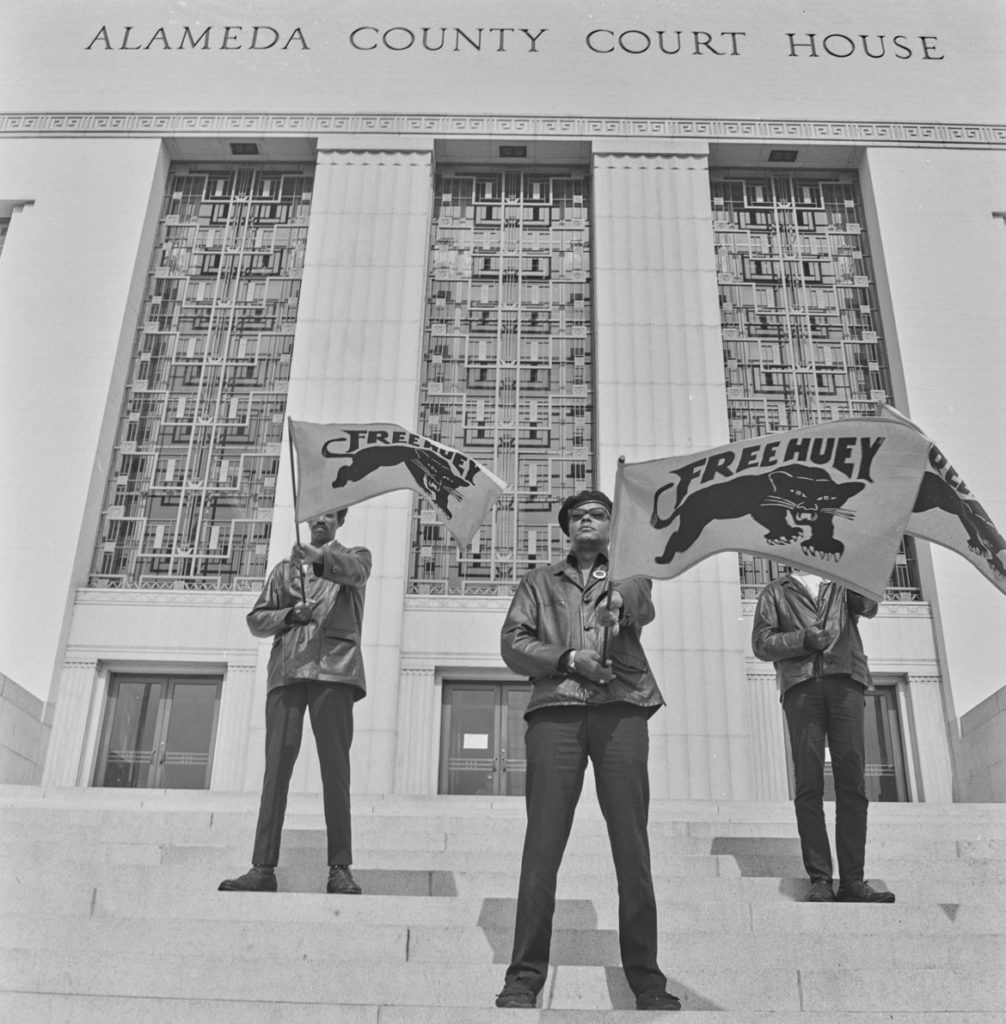
Thirty of their 1968 and ’69 photos are on view as part of “Vanguard Revisited: Poetic Politics & Black Futures” at the San Francisco Art Institute’s galleries from Jan. 22 to April 7, 2019. They show Panthers protesting. They show them with their trademark rifles. They show them teaching. They show them serving children at their free breakfast program. They show the Panthers as mothers and fathers. They show the window of the party’s national headquarters in Oakland shattered by police bullets in September 1968.
Jones and Baruch “had a great eye for humanity; nobody was posing; we were all part of somebody’s family,” Black Panthers co-founder Elbert “Big Man” Howard said. They “captured the real love and inspiration of what the Black Panther Party was all about.”
If this is the kind of coverage of arts, cultures and activisms you appreciate, please support Wonderland by contributing to Wonderland on Patreon. And sign up for our free, weekly newsletter so that you don’t miss any of our reporting.
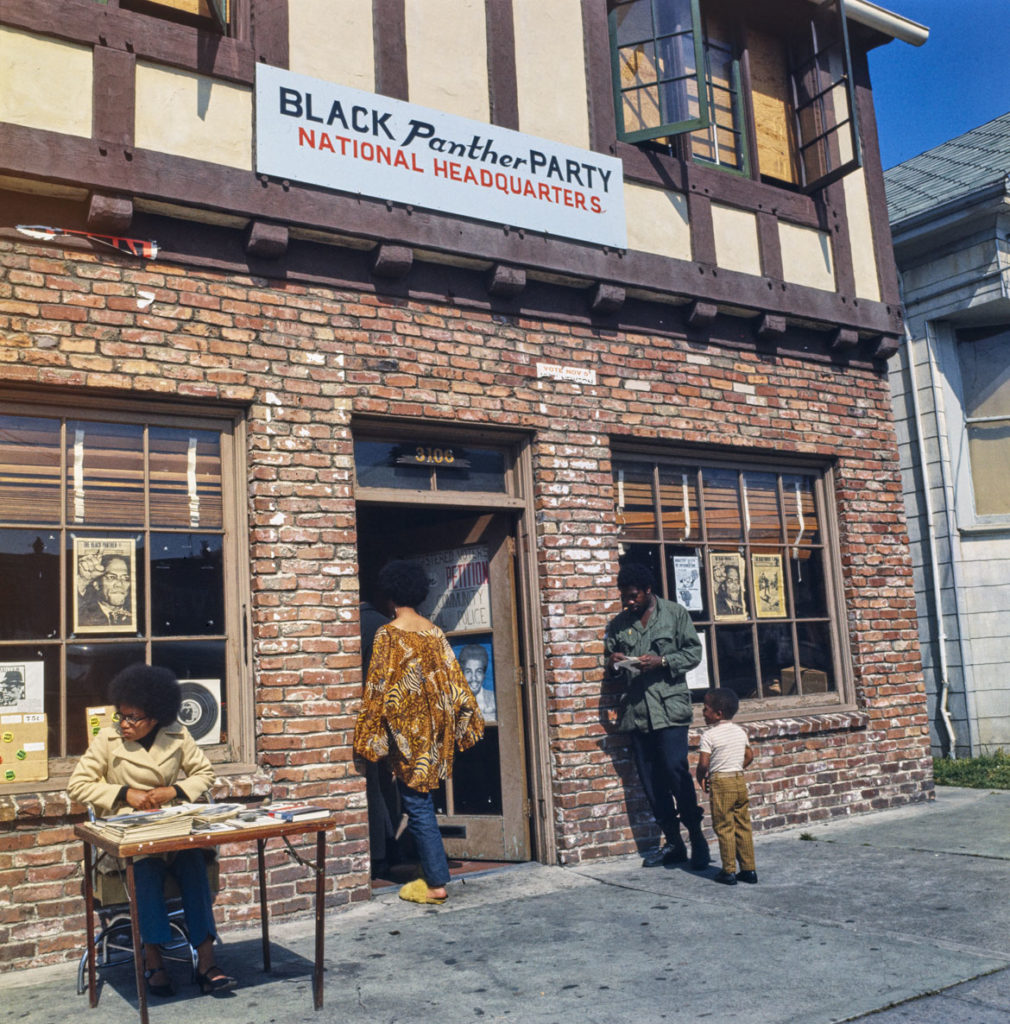
Baruch (1922-1997) and Jones (1914-2009) met in 1946 while studying photography at California School of Fine Arts (now San Francisco Art Institute) in San Francisco under Ansel Adams. They married in 1949.
Baruch would photograph Haight-Ashbury, Walnut Grove, and women shopping at San Francisco’s Union Square. Jones would photograph migrant farm workers, a Sausalito houseboat community, and, with Dorothea Lange in 1956, Berryessa Valley towns and farms before they were inundated by the construction of the Monticello Dam. He also served as Ansel Adams’s assistant and printmaker.
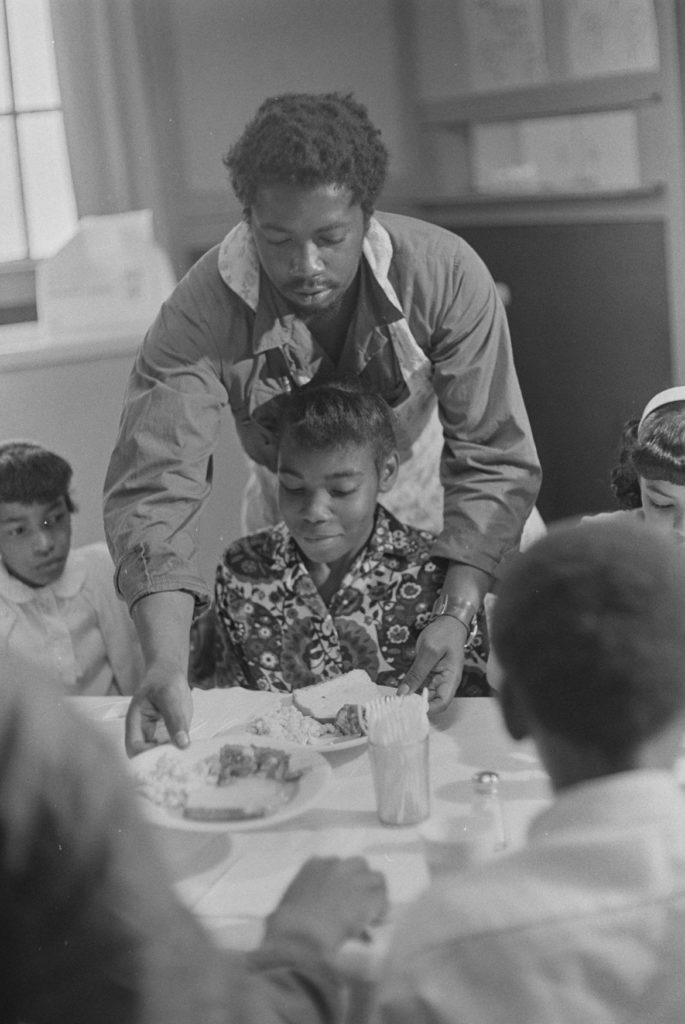
But their best-known project is their photos of the Black Panthers from July through October 1968, and into the following year. It began when Baruch approached Black Panther Party Communications Secretary Kathleen Cleaver after a talk she gave in summer 1968 at California’s College of Marin. Baruch proposed photographing the group, which had been founded two years earlier. Cleaver encouraged Baruch to call her husband, Eldridge Cleaver, the Panthers’ Minister of Information. Mr. Cleaver invited Baruch over to their third-floor apartment to talk, but when she went over she found him too busy to meet. Instead he encouraged her to come to a Free Huey Rally at Oakland’s De Fremery Park on July 14 and a protest in front of the Alameda County Court House the following morning.

Panther leaders addressed the crowd from atop a modified school bus at the De Fremery rally. Baruch wrote that she and her husband mainly photographed the audience because Panther leaders were surrounded by guards who would not let anyone close without permission.
“We brought them [the Cleavers] work periodically, and gave them a selection of prints each time, for whatever use they desired,” Baruch wrote. “They used many of them in their paper.” Over time, the couple was granted more intimate access to party leaders.
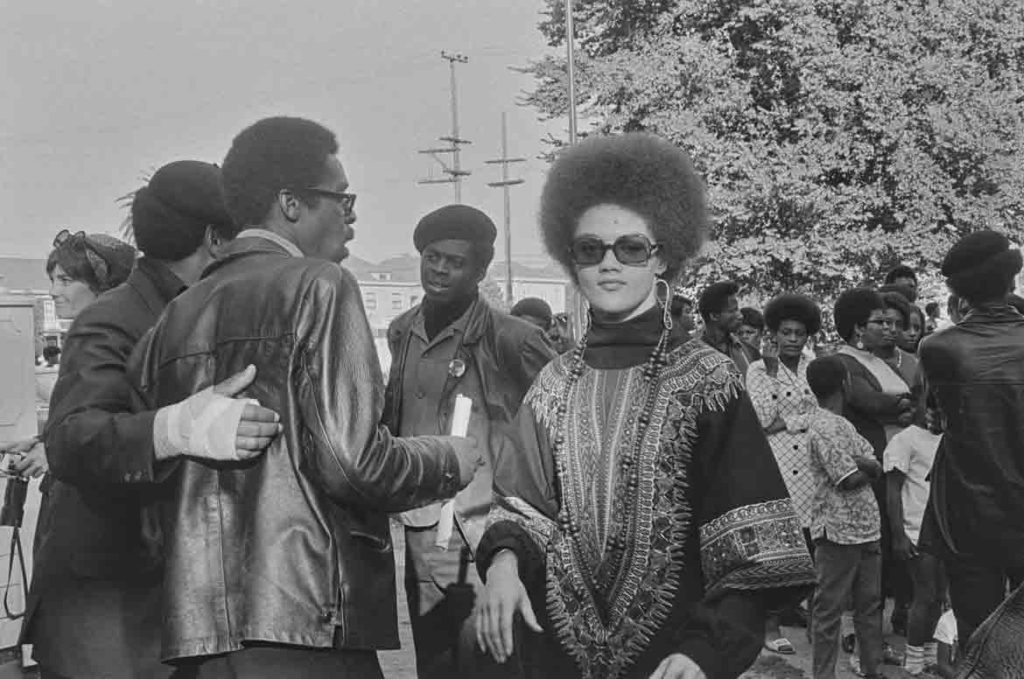
That September, they were allowed to photograph Black Panther Party co-founder Huey Newton inside the Alameda County Court House Jail in Oakland, where he was being held, accused of killing an Oakland policeman. Newton was convicted the next day, Baruch wrote. (In 1970, the decision was reversed and a new trial ordered was ordered. Two further trials ended in hung juries and finally the charges were dismissed.)
“Many of the Black Panther leaders have been falsely arrested and accused of serious crimes,” Baruch wrote in the 1970 book. “Bobby Seale is accused of murder. David Hilliard of attempted murder. Emory Douglas was arrested for assault on an officer, and Charles Bursey was convicted of attempted murder. Eldridge [Cleaver], of course, had to go underground in order to survive; and George Murray, who was imprisoned after was photographed him, was recently released on the promise that he would disassociate himself from the Panthers. All of these, and many more, are people we had worked with and grown to respect.”
The De Young Museum in San Francisco had encouraged Baruch and Jones to photograph the Panthers, pledging to exhibit the images that December, Baruch wrote. But as the exhibition neared, the museum tried to postpone the show “till things cool down.”
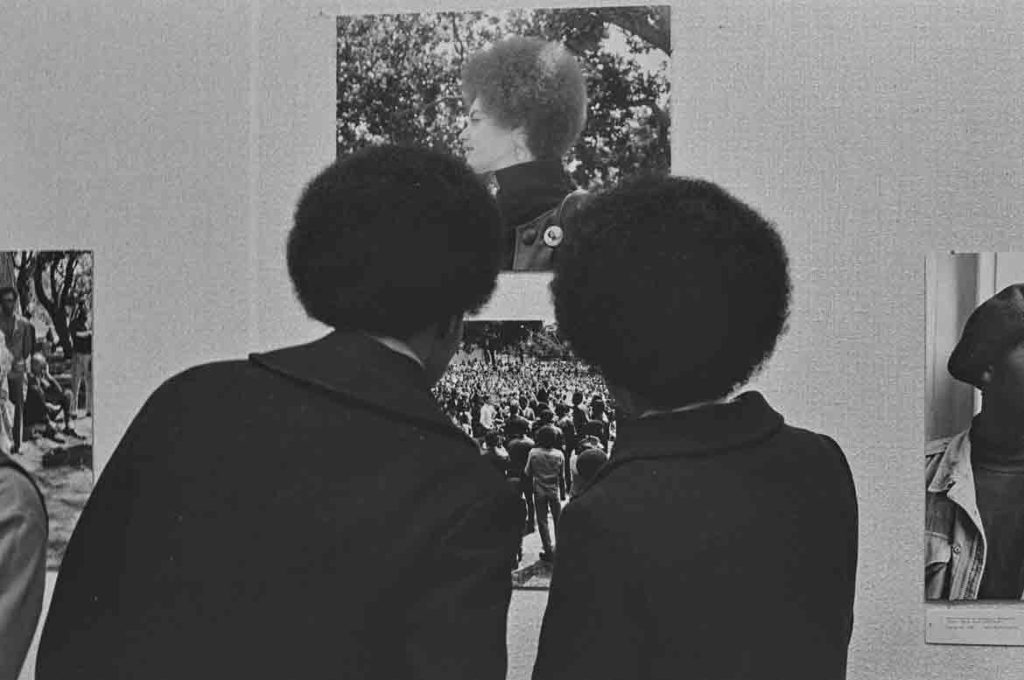
“They never will,” Baruch recalled telling the museum. The couple leveraged coverage from a San Francisco newspaper to get the museum and city leaders to go forward with the exhibition of some 123 photos, she wrote. Over about six weeks, their “The Black Panthers: A Photographic Essay” attracted more than 100,000 visitors. The exhibition traveled to the Studio Museum in Harlem in 1969, Dartmouth College in New Hampshire, and the University of California at Santa Cruz.
In 2016, the Marin Community Foundation donated Jones’ and Baruch’s entire photography collection to the University of California, Santa Cruz, “the single largest gift in the campus’ history, with an estimated value of $32 million.” The gift comprised 12,000 photographic prints, 25,000 negatives and thousands of transparencies created by both Jones and Baruch, as well as prints by Dorothea Lange, Edward Weston, Ansel Adams and Minor White. In 2018, the university digitized more than 6,300 of the photographs and made them available online.
“This is what we saw,” Baruch wrote of the Panthers in their 1970 book. “This is what we felt. These are the people.”
Previously:
Feb. 28, 2017: Black Panther Co-Founder Bobby Seale: “We’d take their arrests, they knew that. But they didn’t come in saying, ‘You’re under arrest.’”
If this is the kind of coverage of arts, cultures and activisms you appreciate, please support Wonderland by contributing to Wonderland on Patreon. And sign up for our free, weekly newsletter so that you don’t miss any of our reporting.
